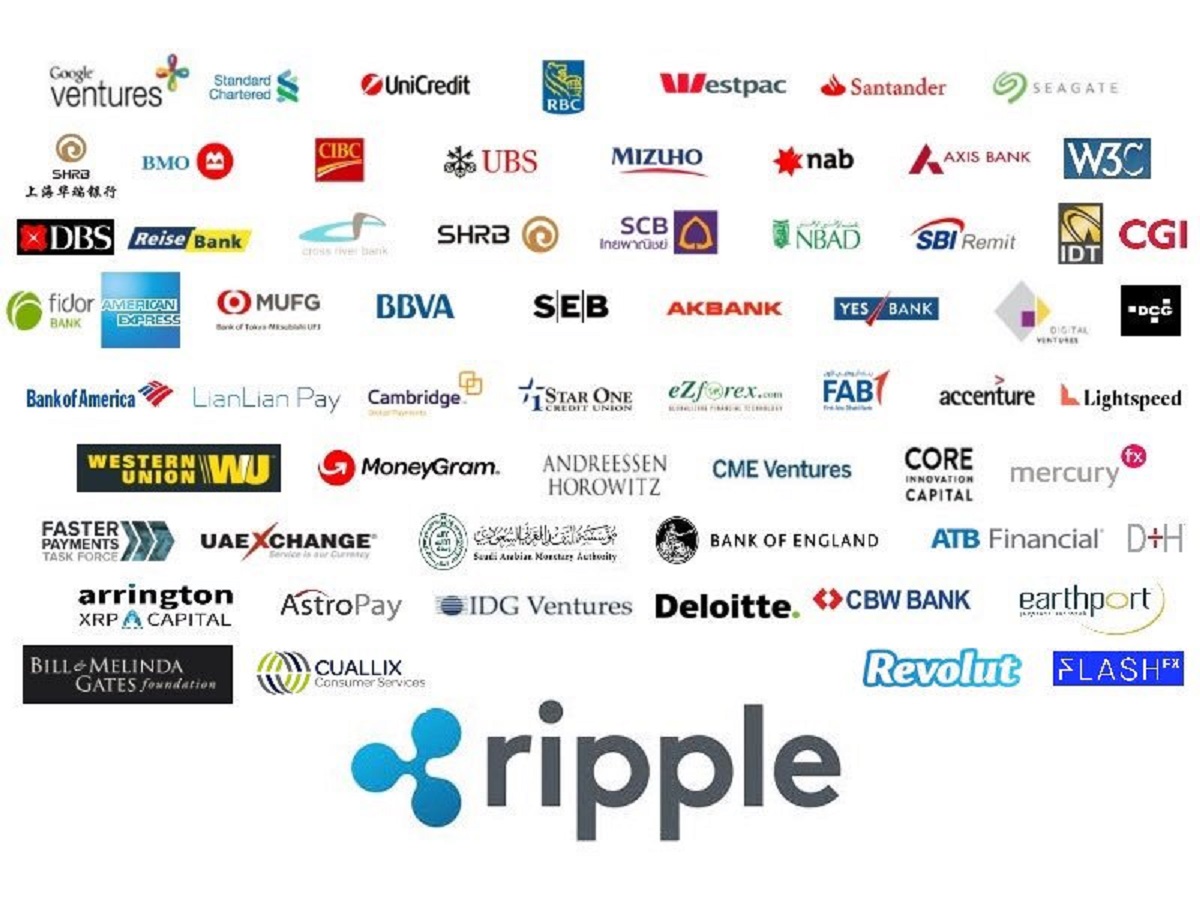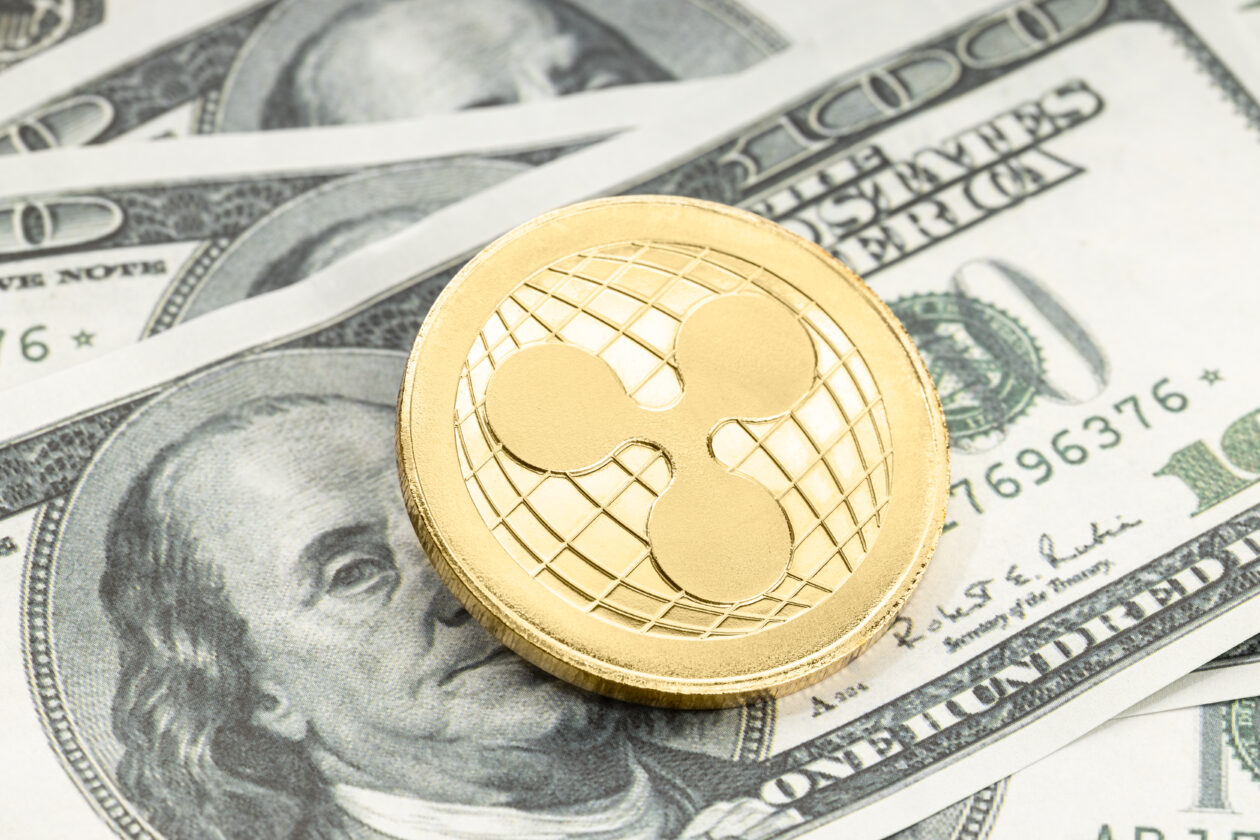Introduction
Welcome to the world of digital remittance fintech! In today’s fast-paced and interconnected global economy, the demand for secure and efficient methods of transferring money across borders has never been higher. Digital remittance fintech has emerged as a game-changer in this field, revolutionizing the way people send and receive money internationally.
Digital remittance fintech refers to the use of technology, particularly digital platforms and applications, to facilitate the transfer of funds between individuals or businesses across different countries. This innovative approach leverages the power of the internet and mobile devices to streamline the remittance process, making it faster, more convenient, and cost-effective.
The traditional method of remittances involved physical cash, lengthy paperwork, and high fees charged by intermediaries. However, with the advent of digital remittance fintech, these inefficiencies are being eliminated, benefiting both senders and recipients of international money transfers.
The rise of digital remittance fintech has been fueled by several factors. Firstly, the increasing number of migrants, expatriates, and international students has created a growing need for efficient ways to send money back home or support their loved ones abroad. Additionally, the widespread adoption of smartphones and internet connectivity has made it easier for individuals to access digital remittance services anytime, anywhere.
Moreover, digital remittance fintech offers a plethora of benefits compared to traditional methods. It enables users to transfer money quickly, often within minutes, cutting down the processing time significantly. Additionally, digital remittance platforms often offer competitive exchange rates and lower fees, ensuring more value for the sender and recipient.
Furthermore, digital remittance fintech provides greater transparency and security in the transfer process. Users can track their transactions in real-time, ensuring peace of mind and reducing the risk of fraud or loss. This enhanced level of trust is bolstered by the implementation of rigorous security measures and advanced encryption technologies.
The digital remittance fintech industry is witnessing intense competition among various players, including fintech startups, traditional banks, and established money transfer operators. Each entity strives to offer unique features and services to attract customers and gain market share.
However, it’s important to note that digital remittance fintech also faces its fair share of challenges and risks. These include regulatory compliance, cross-border regulations, exchange rate fluctuations, and potential cybersecurity threats. Overcoming these challenges will require strong industry collaboration, effective risk management strategies, and ongoing technological advancements.
In the following sections, we will delve deeper into how digital remittance fintech works, explore the advantages it offers, discuss key players in the industry, highlight the challenges, and speculate on future trends. So, let’s embark on this exciting journey of digital remittance fintech and uncover the possibilities it holds!
Definition of Digital Remittance Fintech
Digital remittance fintech can be defined as the fusion of technology and financial services that enables the seamless transfer of money across borders using digital platforms. Fintech, short for financial technology, pertains to the application of innovative technologies in the financial sector to improve efficiency, accessibility, and customer experience.
In the context of remittance, digital fintech platforms leverage advancements in mobile technology, internet connectivity, and secure payment systems to facilitate cross-border money transfers. These platforms act as intermediaries between the sender and recipient, offering a convenient and cost-effective solution for international remittances.
Traditional remittance methods typically involved physical cash or checks, which were susceptible to delays, high fees, and potential loss. Digital remittance fintech disrupts this traditional model by enabling individuals to transfer money electronically, eliminating the need for physical presence or paper-based transactions.
This innovative approach relies on digital wallets, mobile applications, online banking platforms, and other digital financial services to facilitate the transfer of funds. Senders can initiate transactions through user-friendly interfaces, providing essential details such as the recipient’s information and the desired amount to be transferred.
Once the transaction is initiated, the digital remittance fintech platform securely processes the transfer, converting the currency if necessary, and swiftly delivering the funds to the recipient’s designated account or digital wallet. Some platforms even offer multiple payout options, including direct bank transfers, cash pickups, or mobile wallet top-ups in the recipient’s local currency.
One of the key features of digital remittance fintech is its ability to offer competitive exchange rates and lower fees compared to traditional remittance methods. By leveraging technology and automated processes, these platforms can optimize the transfer process, reducing overhead costs and passing on the savings to their customers.
Moreover, digital remittance fintech provides a level of convenience and accessibility that was previously unheard of in the remittance industry. Users can initiate transfers anytime, anywhere, through their smartphones or computers, without the need to visit physical locations or fill out lengthy paperwork.
The adoption of digital remittance fintech is particularly beneficial for individuals in underserved or unbanked regions. By leveraging mobile technology, even those without access to traditional banking services can now receive and manage international remittances through their mobile phones, offering them greater financial inclusion.
Overall, the rise of digital remittance fintech signifies a fundamental shift in the way money is transferred globally. By harnessing the power of technology and innovation, this emerging sector is democratizing the remittance industry, making it more accessible, affordable, and secure for individuals and businesses alike.
How Digital Remittance Fintech Works
Digital remittance fintech operates on a sophisticated system that enables the secure and efficient transfer of funds across borders. Let’s take a closer look at the step-by-step process of how digital remittance fintech works:
- Registration: To begin using a digital remittance fintech platform, users must first register an account. This typically involves providing personal details, such as name, address, and identification documents, to comply with regulatory requirements.
- Verification: Once registered, users may undergo a verification process to confirm their identity and increase transaction limits. This may involve submitting additional documentation or completing a series of authentication steps.
- Initiating a Transaction: After the registration and verification process, users can initiate a remittance transaction. They need to provide the necessary information, including the recipient’s details, such as name, contact information, and bank account details, along with the amount to be transferred.
- Conversion and Calculation: If the sender and recipient’s currencies differ, the digital remittance fintech platform automatically converts the funds at a competitive exchange rate. Additionally, the platform calculates the fees associated with the transfer, ensuring transparency in the transaction.
- Secure Payment Processing: Once the sender confirms the transaction, the digital remittance fintech platform securely processes the payment. This involves deducting the transfer amount and applicable fees from the sender’s account and holding the funds in a secure custodial account.
- Transfer to Recipient: The platform proceeds to transfer the funds to the recipient’s designated bank account or digital wallet. The recipient is typically notified of the transfer, and the funds are made available to them according to their preferred payout method.
- Transaction Monitoring: Throughout the process, both the sender and recipient can track the progress of the transaction through the digital remittance fintech platform’s user interface. Real-time updates and notifications provide transparency and reassurance to both parties.
- Security and Compliance: Digital remittance fintech platforms prioritize security measures to protect users’ sensitive information and prevent fraud. They adhere to strict regulatory compliance protocols, implementing robust encryption technologies and identity verification processes.
- Customer Support: In case of any inquiries or issues, digital remittance fintech platforms usually offer customer support services. These can range from live chat support to email or phone assistance, ensuring a seamless user experience.
By following these steps, digital remittance fintech platforms enable individuals and businesses to transfer money quickly, securely, and conveniently across borders. The process leverages technology to automate and streamline various aspects of the remittance transaction, ultimately benefiting both senders and recipients.
Advantages of Digital Remittance Fintech
Digital remittance fintech offers numerous advantages over traditional methods of transferring money internationally. Let’s explore some of the key benefits:
- Speed: One of the significant advantages of digital remittance fintech is the speed at which funds can be transferred. Unlike traditional methods that can take several days or even weeks, digital remittance transactions are often completed within minutes or hours.
- Convenience: Digital remittance fintech allows users to initiate transactions anytime, anywhere, from the comfort of their mobile devices or computers. This eliminates the need to visit physical remittance centers or banks, providing unparalleled convenience.
- Cost-Effectiveness: Fintech platforms typically offer more competitive exchange rates and lower fees compared to traditional remittance services. By leveraging technology and automated processes, digital remittance fintech companies can reduce overhead costs and pass on the savings to their customers.
- Transparency: Digital remittance fintech platforms provide users with real-time transaction updates, allowing them to track the progress of their transfers. This transparency helps build trust and confidence in the remittance process.
- Security: Fintech companies employ advanced security measures and encryption technologies to protect users’ sensitive information and secure the transfer of funds. This ensures a high level of security and reduces the risk of fraud or unauthorized access.
- Financial Inclusion: Digital remittance fintech plays a vital role in promoting financial inclusion, particularly in underserved or unbanked regions. By leveraging mobile technology, individuals who previously had limited access to traditional banking services can now receive and manage international remittances conveniently.
- Accessibility: Digital remittance fintech platforms often offer multiple payout options, including direct bank transfers, cash pickups, or mobile wallet top-ups. This flexibility allows recipients to choose the most convenient method of receiving their funds.
- Competitive Market: The emergence of digital remittance fintech has created a competitive market, leading to innovative features and services. Users can benefit from the multitude of choices available, ensuring they find a platform that best suits their needs.
- Economic Impact: Digital remittance fintech plays a crucial role in supporting economic growth and development by facilitating the flow of funds across borders. It allows individuals to support their families, invest in education, start businesses, and contribute to economic stability in their home countries.
Overall, digital remittance fintech simplifies and enhances the process of transferring money internationally. Its speed, convenience, cost-effectiveness, and emphasis on security make it an attractive alternative to traditional remittance methods, benefiting both senders and recipients alike.
Key Players in Digital Remittance Fintech
The digital remittance fintech industry is crowded with various players that offer innovative solutions and services for international money transfers. Let’s take a look at some of the key players in this rapidly growing sector:
- TransferWise: TransferWise is a prominent digital remittance fintech company that has gained popularity for its transparent and low-cost international money transfer services. They leverage peer-to-peer technology to match senders and recipients in different countries, bypassing the traditional banking system and reducing associated fees.
- Revolut: Revolut is a fintech firm that offers digital banking services, including international money transfers. Their multi-currency accounts and handy mobile application enable users to send and receive money abroad with competitive exchange rates.
- Remitly: Remitly is a digital remittance company that focuses on providing affordable and secure money transfer services. They offer different options for delivery, such as direct bank deposits, cash pickups, and mobile wallet top-ups.
- WorldRemit: WorldRemit is a global digital remittance platform that connects senders and recipients in over 150 countries. They offer various payout methods and emphasize convenience and affordability in their services.
- Xendpay: Xendpay is a digital remittance platform that allows users to send money online to bank accounts in over 170 countries. They aim to provide customers with a fair and transparent pricing structure, offering competitive exchange rates and low fees.
- Azimo: Azimo is a digital money transfer company known for its user-friendly platform and competitive rates. They offer instant transfers to over 200 countries and provide support for cash pickups, bank transfers, mobile wallets, and more.
- PayPal: As a widely recognized digital payment platform, PayPal has expanded its services to include international remittance. Users can send money globally using their PayPal accounts or linked bank accounts or cards.
- Western Union: While traditionally known as a money transfer giant, Western Union has also embraced digital remittance. They offer online and mobile options for sending money internationally, catering to a wide range of customers.
- MoneyGram: MoneyGram is another established player in the remittance industry that has embraced digital technology. They allow users to send money globally through their online platforms and offer various payout options for recipients.
These are just a few examples of the key players in the digital remittance fintech space. However, the industry is rapidly evolving, and new players, innovative startups, and traditional financial institutions are continuously entering the market, offering unique features and services to meet the growing demand for fast, secure, and cost-effective international money transfers.
Challenges and Risks in Digital Remittance Fintech
While digital remittance fintech presents numerous benefits, there are also certain challenges and risks associated with this growing industry. Let’s explore some of the key challenges and risks:
- Regulatory Compliance: Digital remittance fintech operates within a complex regulatory landscape, as governments strive to prevent money laundering, terrorist financing, and other illicit activities. Fintech companies must navigate and comply with evolving laws and regulations, which can vary across jurisdictions.
- Cross-Border Regulations: Transferring money across borders involves compliance with multiple regulations from both the sender and recipient countries. Fintech platforms must navigate these regulations while ensuring a seamless user experience, which can be challenging.
- Exchange Rate Fluctuations: Exchange rate fluctuations can impact the cost and value of international transfers. Fintech platforms must manage these fluctuations and provide competitive exchange rates to attract and retain customers.
- Cybersecurity Threats: As digital platforms handle sensitive financial data, they are vulnerable to cybersecurity threats, including data breaches and hacking attempts. Fintech companies must invest in robust security measures to protect user information and maintain trust.
- Customer Identification and Authentication: Ensuring the identity of customers and preventing fraud is crucial in digital remittance fintech. Platforms must implement effective customer identification and authentication processes to mitigate risks and comply with regulatory requirements.
- Operational Scalability: As digital remittance fintech companies grow and attract more users, they face the challenge of scaling their operations to handle increased transaction volumes effectively. Maintaining efficiency and seamless service delivery is critical in a competitive market.
- Cultural and Language Barriers: The global nature of digital remittance fintech means platforms must navigate cultural and language barriers when serving diverse customer bases. Providing multilingual support and localized services can be a challenge.
- Trust and Customer Perception: Building trust and confidence in digital remittance fintech is essential. Overcoming the perception that traditional methods are safer can be a hurdle for fintech platforms, necessitating effective communication and education to highlight the benefits and security of their services.
- Interoperability and Integration: Fintech companies often need to integrate their platforms with existing banking systems and networks to ensure smooth transactions. Collaborating with financial institutions and establishing interoperability can be complex and time-consuming.
Overcoming these challenges and mitigating risks requires a combination of technological advancements, regulatory compliance, risk management, and continuous innovation within the digital remittance fintech industry. As the sector continues to evolve, industry collaboration and adaptability will play a crucial role in addressing these challenges and ensuring the growth and sustainability of digital remittance fintech services.
Future Trends in Digital Remittance Fintech
The digital remittance fintech sector is poised for continued growth and innovation, driven by advancements in technology and changing consumer preferences. Let’s explore some of the future trends that are set to shape the industry:
- Blockchain and Distributed Ledger Technology (DLT): The adoption of blockchain and DLT in digital remittance fintech is gaining traction. These technologies offer enhanced security, transparency, and efficiency in cross-border transactions, reducing the need for intermediaries and streamlining the remittance process.
- Artificial Intelligence (AI) and Machine Learning (ML): AI and ML are poised to play a significant role in digital remittance fintech. These technologies can automate transaction monitoring, fraud detection, and customer authentication processes, improving security and enhancing the user experience.
- Mobile and Digital Wallets: With the increasing penetration of smartphones and internet connectivity, mobile and digital wallets are becoming more prevalent. Digital remittance fintech platforms will continue to integrate with these wallets, offering users a seamless and convenient way to send and receive money.
- Improved User Experience: Fintech companies will focus on enhancing the user experience by providing intuitive interfaces, personalized services, and real-time notifications. User-centric design and easy-to-use platforms will drive customer satisfaction and loyalty.
- Integration of Virtual Currencies: The integration of virtual currencies, such as cryptocurrencies, is an emerging trend in digital remittance fintech. Platforms that support cryptocurrencies can provide users with additional options for international money transfers, offering potential benefits such as faster and cheaper transactions.
- Enhanced Regulatory Framework: Governments and regulatory bodies will likely continue to adapt and refine regulations pertaining to digital remittance fintech. This evolving regulatory landscape will foster a more secure and transparent environment, promoting consumer trust and encouraging innovation.
- Partnerships and Collaborations: Fintech companies are increasingly entering into partnerships and collaborations with traditional financial institutions and other industry players. These alliances can facilitate access to existing networks, enhance scalability, and create synergies to better serve customers.
- Financial Inclusion: Digital remittance fintech will continue to play a crucial role in promoting financial inclusion, particularly in underserved regions. Fintech platforms will actively work towards reaching unbanked populations, providing them with affordable and accessible cross-border payment solutions.
- Integration of Biometrics: Biometric authentication, such as fingerprint or facial recognition, is likely to be integrated into the digital remittance process. This will enhance security, simplify identity verification, and offer an additional layer of protection against fraud.
The future of digital remittance fintech holds great promise, with ongoing technological advancements and evolving consumer needs driving innovation. As the industry continues to mature, we can expect more efficient, secure, and convenient methods of transferring money internationally, ultimately benefiting individuals, businesses, and economies around the world.
Conclusion
Digital remittance fintech has revolutionized the way money is transferred internationally, offering a range of benefits including speed, convenience, cost-effectiveness, and security. Through the integration of technology and innovative financial services, digital remittance fintech platforms have streamlined the cross-border transfer process, empowering individuals and businesses to send and receive money with unprecedented ease.
As the industry continues to evolve, it faces various challenges and risks, such as regulatory compliance, cybersecurity threats, and exchange rate fluctuations. However, through effective risk management strategies, technological advancements, and collaboration with traditional financial institutions, these challenges can be overcome, further enhancing the reliability and security of digital remittance fintech services.
Looking ahead, the future of digital remittance fintech is promising. Trends such as blockchain and distributed ledger technology, artificial intelligence, mobile and digital wallets, and partnerships with traditional financial players are set to reshape the industry. These advancements will result in an improved user experience, enhanced security measures, and increased financial inclusion, ultimately benefiting individuals, businesses, and economies worldwide.
In conclusion, digital remittance fintech is facilitating a global shift in how money is sent and received across borders. By leveraging technology, these platforms are delivering faster, more affordable, and secure international money transfers, empowering individuals and driving economic growth. As the world becomes increasingly interconnected, digital remittance fintech will continue to play a pivotal role in shaping the future of cross-border financial transactions.

























